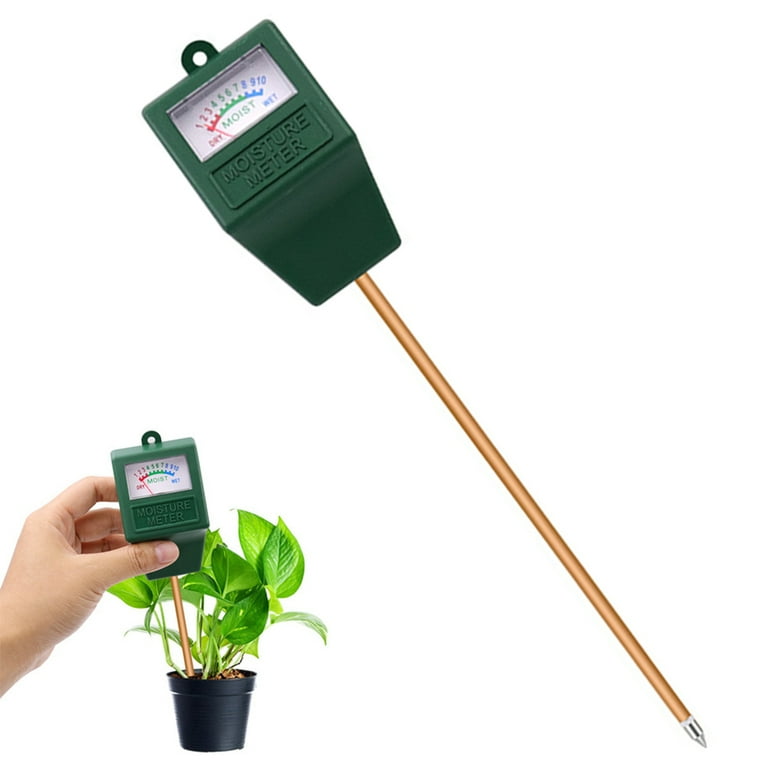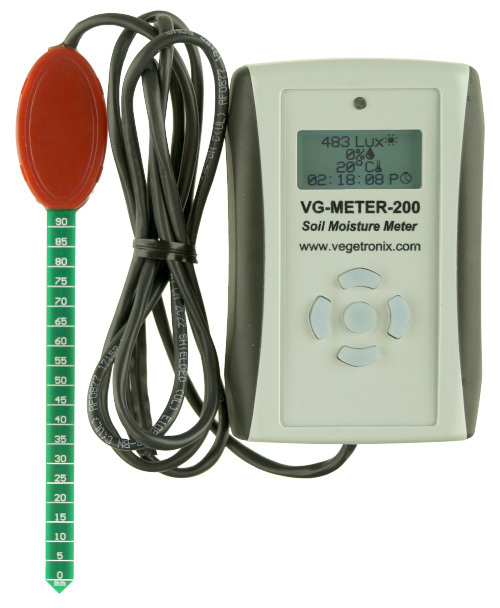Delve Into the World of Dampness Meters: Every Little Thing You Need to Know
In the world of wetness meters exists a world of accuracy and practicality that usually goes unnoticed. Comprehending exactly how moisture meters operate, the different kinds readily available, and their diverse uses can drop light on their value in guaranteeing top quality and performance.
Exactly How Wetness Meters Work
Moisture meters operate by determining the electrical conductivity or capacitance of products to establish the wetness content existing - Moisture Meter. These meters are indispensable tools across numerous markets, including agriculture, woodworking, and construction. By making use of various techniques such as pinless or pin-type modern technology, wetness meters provide accurate analyses that aid professionals make informed decisions
Pin-type dampness meters function by inserting the sharp pins right into the material being evaluated. The electric conductivity in between the pins is then gauged, with greater moisture degrees resulting in boosted conductivity. On the other hand, pinless dampness meters utilize electromagnetic signals to check a bigger location without triggering any damages to the material's surface. These meters are suitable for swiftly assessing moisture degrees in big locations or finished products.
No matter of the method used, moisture meters play a critical duty in stopping issues such as mold and mildew development, architectural damages, or product problems triggered by excess moisture. Recognizing exactly how these meters job is essential for making certain the top quality and integrity of materials in various applications.
Sorts Of Wetness Meters
Offered the essential function dampness meters play in different markets, it is vital to comprehend the different kinds available to professionals for properly evaluating moisture levels. There are largely two primary sorts of wetness meters: pin-type and pinless dampness meters.
Pin-type wetness meters use 2 pins that are inserted right into the material being examined to measure the electric resistance between them. This approach is generally made use of for wood, drywall, and various other building materials. Pin-type meters supply specific analyses at details midsts, making them ideal for identifying dampness slopes.
On the other hand, pinless dampness meters utilize electromagnetic sensing unit plates to scan a bigger area of the product without triggering any kind of damage. This kind is ideal for swiftly scanning big locations and is frequently used for flooring, wall surfaces, and ceilings. Pinless meters are hassle-free for taking analyses on finished surface areas without leaving any noticeable marks.
Both kinds of moisture meters have their advantages and are selected based upon the particular requirements of the work available. Comprehending the distinctions in between these types is critical for professionals to make accurate dampness analyses.
Applications Throughout Industries
With diverse performances, moisture meters locate prevalent application across numerous industries, helping professionals in making sure optimum conditions for materials and frameworks. In the agriculture industry, dampness meters are important for establishing the wetness material in grains, seeds, and hay, making certain high quality control and protecting against mold growth. Building and construction professionals depend on wetness meters to assess the dampness degrees in structure products like wood, drywall, and concrete, which is essential for keeping structural stability and protecting against issues like rot or mold. The flooring sector makes use of dampness meters to determine the dampness content in subfloors prior to mounting numerous flooring treatments, stopping costly damages as a result of excess dampness. In the food market, moisture meters are used to keep track of and control moisture degrees in products such as grains, nuts, and dried out fruits to keep quality and top quality. In addition, wetness meters play a crucial role in the restoration and damages evaluation sector by helping experts determine and deal with water damages in buildings without delay. Across these diverse markets, wetness meters are important devices for guaranteeing the high quality, safety, and long life of different materials and products.
Tips for Utilizing Dampness Meters
When measuring the dampness web content in numerous products,Make use of the moisture meter's calibration setups to make sure exact readings. Calibration is essential for the appropriate functioning of a moisture meter. Before each use, it is recommended to inspect and adjust the calibration settings according to the certain product being evaluated. In addition, ensure the meter is established to the proper dampness array for the material you are determining to obtain one of the most specific outcomes.

When utilizing a pin-type wetness meter, place the pins to the proper depth advised for the product being checked. This makes sure that the moisture readings are taken from the proper deepness within the product, supplying a much more exact representation of its dampness material. For pinless moisture meters, bear in mind to maintain correct call with the product's surface to get trustworthy readings.

Regularly examine and change the batteries in your moisture meter to avoid incorrect readings due to low power. Shop the meter in a completely dry and secure location when not being used to prolong its lifespan and maintain its precision. By adhering to these ideas, you can make best use of the performance of your wetness meter and get accurate dampness web content measurements across different products.

Maintenance and Calibration
To guarantee the precision of dampness material measurements, routine upkeep and calibration of the wetness meter are important action in its proper functioning. Upkeep entails keeping the moisture meter free and tidy from particles that might affect its you could look here readings. It is necessary to adhere to the manufacturer's guidelines for cleaning up to stop damage to the gadget. Additionally, routine calibration is required to verify the precision of the readings. Calibration adjusts the wetness meter to make certain that it supplies trustworthy and regular outcomes.
Calibration ought to be executed regularly, especially if the moisture meter is made use of frequently or in vital applications where specific measurements are required. Numerous wetness meters come with calibration devices or can be adjusted by specialist services - Moisture Meter. It is advised to maintain a you can try these out log of calibration days and results to track the efficiency of the wetness meter over time. By keeping and calibrating the moisture meter on a regular basis, customers can rely on the precision of the moisture content measurements gotten.
Verdict
In final thought, dampness meters play a critical function in various industries by properly measuring the dampness content of products. Recognizing exactly how these devices function, the various types available, and proper upkeep and calibration are vital for acquiring reputable outcomes. Whether in building and construction, agriculture, or manufacturing, making use of moisture meters aids ensure high quality control and effectiveness in processes.
Construction specialists count on wetness meters to examine the dampness levels in building products like drywall, timber, and concrete, which is important for preserving architectural stability and stopping issues like rot or mold and mildew. The flooring industry makes use of wetness meters to gauge the moisture material in subfloors a knockout post before installing different flooring coverings, protecting against expensive damages due to excess wetness.Use the dampness meter's calibration settings to make certain exact readings when measuring the moisture content in various products. By complying with these suggestions, you can take full advantage of the performance of your dampness meter and obtain accurate wetness content measurements across various products.
In verdict, dampness meters play an essential duty in various sectors by accurately measuring the dampness material of materials.